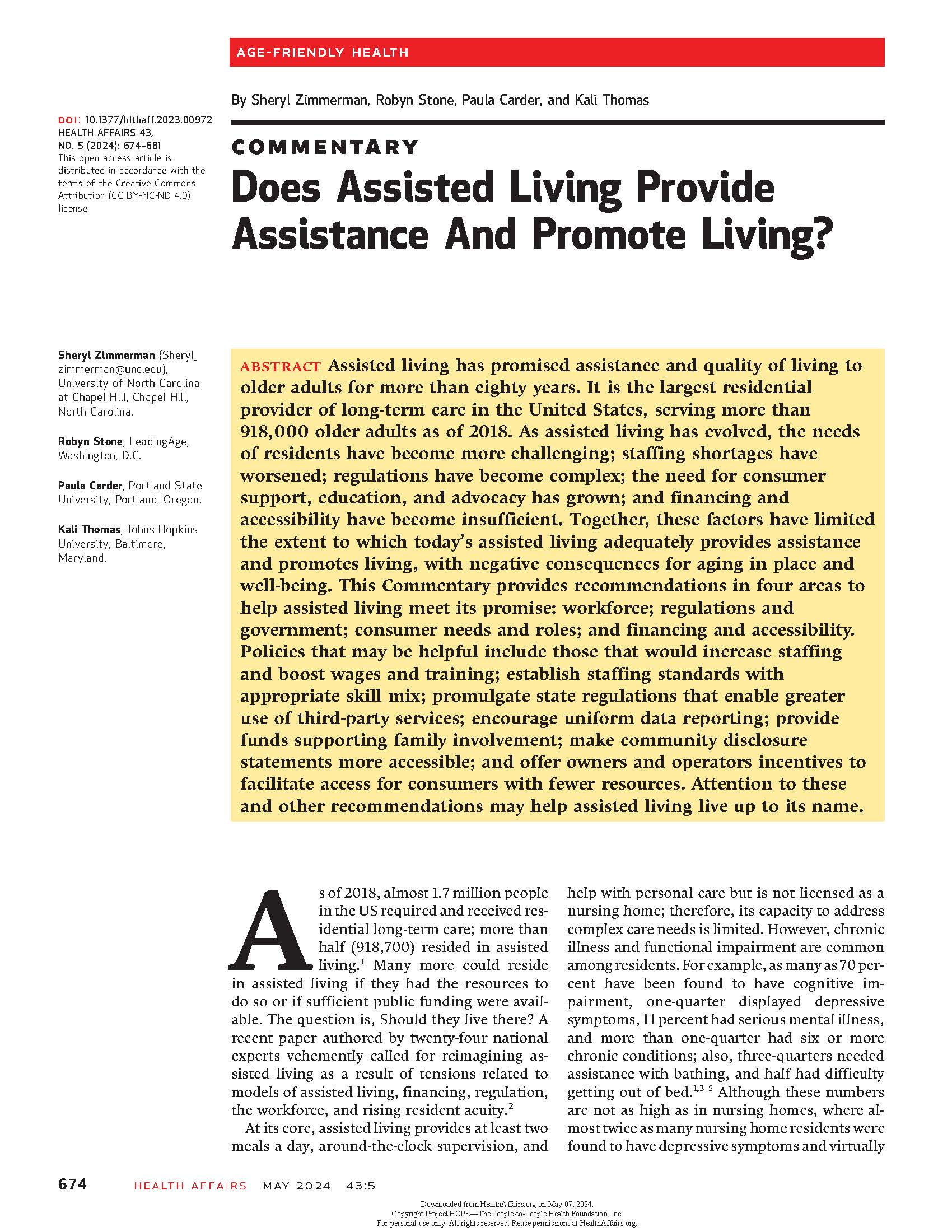Objectives
To examine transitions to a nursing home among residents of assisted living relative to community-dwelling home care recipients.
Design
Population-based retrospective cohort study emulating a target trial.
Setting and Participants
Linked, individual-level health system data were obtained from older adults (≥65 years of age) who made an incident application for a bed in a nursing home in Ontario, Canada, between April 1, 2014, and March 31, 2019, and were followed until December 31, 2019.
Methods
Residency in assisted living was compared with only community-dwelling home care. Any long-stay (≥90 days) and short-stay (<90 days) transitions to a nursing home were examined. Inverse probability weighted pooled logistic regression models were used to generate marginal cumulative incidence curves under each exposure status that were standardized by the covariates.
Results
This study included 10,012 residents of assisted living (mean [SD] age 88.7 [6.26] years, 75% female) and 131,679 home care recipients (mean [SD] age 84.8 [7.43] years, 63% female) who applied for a bed in a nursing home (N = 141,691; 95,744.6 person-years). There were 6049 transitions among applicants from assisted living and 85,190 transitions among applicants who were home care recipients to a nursing home. The 5-year absolute risk reduction was 110 transitions to a nursing home per 1000 older adult applicants if all applicants resided in assisted living (95% CI, 71–148). Residency in assisted living resulted in a 12.7% relative decrease in the 5-year risk of any transition to a nursing home had all applicants resided in assisted living (95% CI, 8.3%–17.1%).
Conclusions and Implications
Residents of assisted living were less likely to transition to a nursing home, despite equivalent clinical complexity and health care needs. The integration of assisted living into the continuum of care from the community to institutionalized nursing homes would better inform health system capacity and planning.

Center for Excellence in Assisted Living CEAL@UNC
Advancing the well-being of the people who live and work in assisted living through research, practice, and policy.

